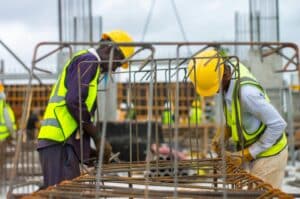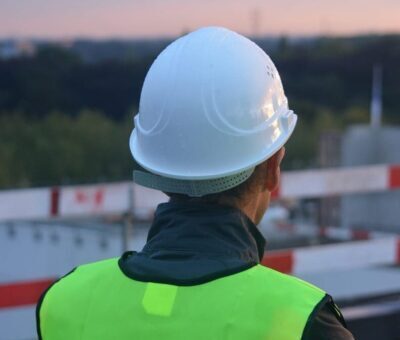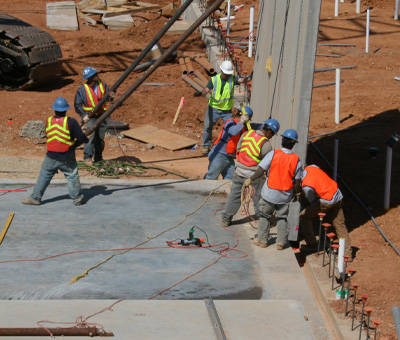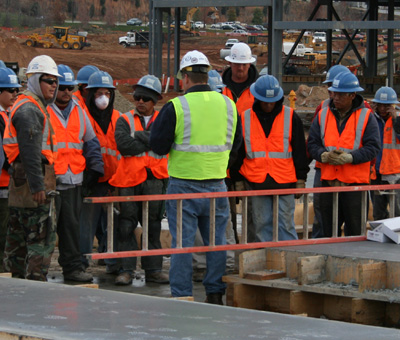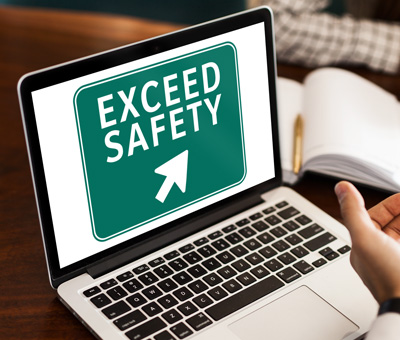In 2007, a thought-provoking article was published in Concrete Construction magazine, challenging the traditional notion of safety in the workplace. Now, nearly twenty years on, it’s time to revisit this vital concept in light of evolving perspectives.
Today, the narrative is shifting from viewing safety as a mere priority to embracing it as a core value.
Hard Truths
The original article laid out some hard truths: the primary function of a company is to generate profit; without it, survival is impossible. It boldly acknowledged that in the realm of concrete work, the material itself sets the pace, not the workers. The same can be said for many industries, not just concrete. This frank admission set the stage for a deeper discussion on safety.
In the early 2000’s, the concept of balancing safety with production was a challenging task. The common scenario was all too familiar: safety is a priority, but under the pressure of schedules, it takes a backseat. This lead to compromised safety measures and, inevitably, accidents. This cyclical issue highlighted a fundamental flaw in how safety was perceived and integrated into work processes.
A Shift in Perspective
Today, the narrative is shifting from viewing safety as a mere priority to embracing it as a core value. Values, unlike priorities, are deeply ingrained and less susceptible to change under varying circumstances. They are the fundamental beliefs that guide our actions and decisions – the principles of honesty, faith, and family love, for example. These are values instilled in us at a young age that we carry through into our adult lives. However, values can evolve; for instance, becoming a parent often reshapes one’s values significantly.
In the workplace, if safety is instilled as a value rather than just a priority, it becomes a constant, unaffected by changing circumstances or pressures. This isn’t a straightforward transformation; it requires time, effort, and unwavering commitment to shift the organizational culture. Courses like “Servant Leadership” underline this idea, emphasizing the role of leaders in fostering a workplace safety isn’t just a policy, but a deeply held value.
This concept is echoed in Tim Russell’s book, “Wisdom of Our Fathers,” which suggests that one’s legacy is determined by others based on the values they witnessed and experienced. In the context of workplace safety, creating a value system around safety ensures that it is more than just a temporary focus—it becomes part of the organization’s DNA.
Therefore, moving safety from a fluctuating priority to a steadfast value is not just a strategic shift; it’s a cultural one. It ensures that safety is not just first in line but is an integral part of every decision and action within the organization.
Building Safety from the Start with Prevention Through Design
In workplace safety, the best results come from stopping hazards before they ever reach employees. While training, procedures, and personal protective equipment (PPE) are important, the most effective approach is to design hazards out of the workplace from the beginning. This approach is known as Prevention through Design (PtD). What is Prevention through Design? Prevention…
Continue Reading Building Safety from the Start with Prevention Through Design
Emergency Preparedness: Staying Ready
Whether a misstep causes a fall or a natural disaster causes an evacuation, emergencies happen. Emergency preparedness and response can mean the difference in avoiding an injury or ending with a fatality. Emergencies come with little to no warning. While we may think these are extreme situations that will “never” happen to us, the reality…
Continuous Improvement and Immersive Training in Action
Construction is a dangerous business. Risks are constant, standards shift, and complacency can be deadly. For Jennifer Lastra, a U.S. Navy veteran and current CEO of 360 Immersive, corporate-style training falls far short. True safety begins with continuous improvement, supported by real engagement on the job. Training Should Go Beyond a Click-Through Box “Corporate training…
Continue Reading Continuous Improvement and Immersive Training in Action



